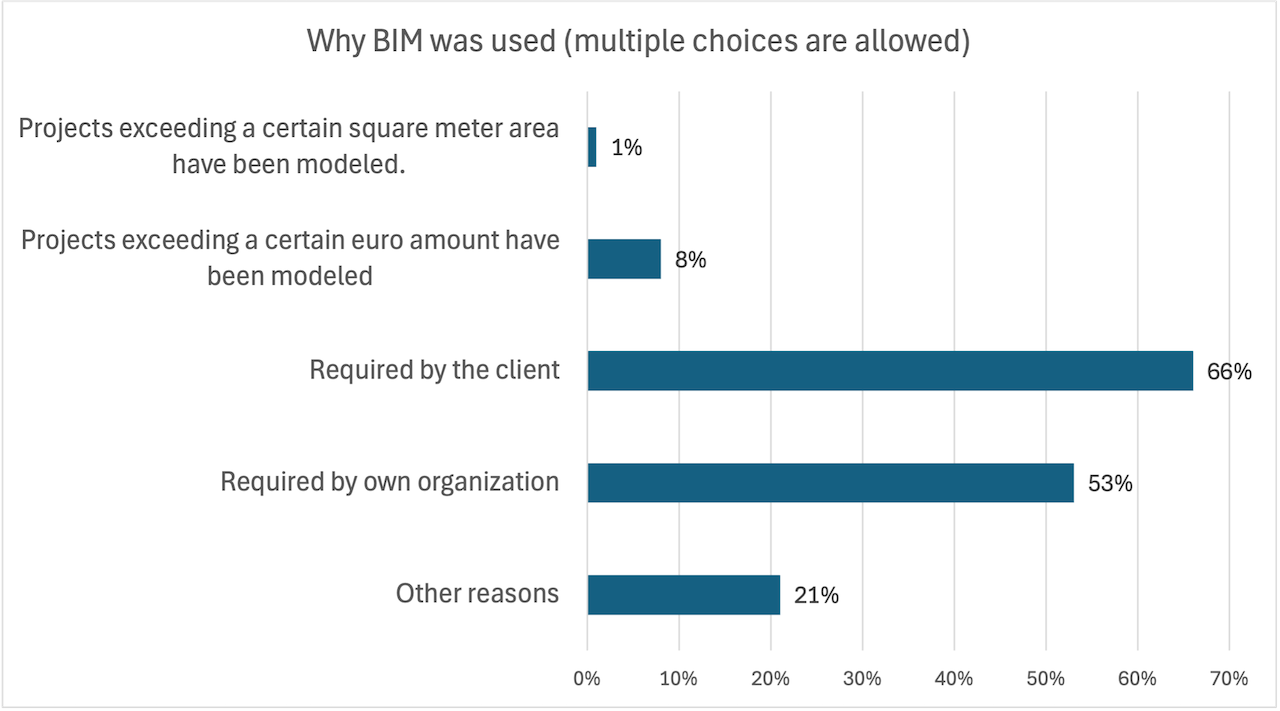Finland has been a global pioneer in systematically using Building Information Modeling. A study by the LAB University of Applied Sciences aimed to determine the current state of BIM and competence needs in building construction. What can international construction professionals learn from Finland’s experiences to better strategize their approach to increasing BIM adoption?
The 2021 study was part of the BIM-ICE (BIM Integration in Higher and Continuing Education) project. It surveyed 90 Finnish professionals, most of whom (approximately 49%) worked in design offices, while about 33% were employed by contracting organizations. Mari Janhunen, the researcher, points out that not all the respondents were BIM power users.
Approximately 58% of respondents have used BIM in some of their projects, and 29% use it in all their projects. However, 13% of respondents have never used BIM.

The Takeaways
The actual benefits of BIM are unlocked when integrated into data-driven processes across design, manufacturing, logistics, construction, maintenance, and operations. The Finnish experience provides guidelines for achieving this goal:
Implement Open BIM
Open BIM promotes interoperability across different software platforms, making collaboration easier across teams and organizations. The report shows that while Open BIM is acknowledged, it is underutilized. 32% of the respondents knew IFC well, 28% not at all.
Tailor training programs to address knowledge gaps
The report highlights significant variations in professionals’ BIM knowledge and software proficiency. A more than one-size-fits-all approach to BIM training is required. The respondents needed additional training in their primary design tools (Revit, Tekla Structures) and supportive tools like Solibri and Dynamo. Training is also needed for the use of BIM on the construction site and among subcontractors.
You can start with large projects, but don’t ignore smaller and renovation projects.
The report highlights that BIM is widely adopted in larger projects due to client requirements but is less prevalent in smaller or renovation projects. Demonstrating BIM’s value in smaller projects is critical to addressing resistance to change and building momentum for broader adoption.
Promote the development and use of standardized BIM requirements
Clear, universally applied guidelines make BIM effective. The Finnish YTV2012 (Common BIM Requirements) standard provides a helpful example, although it needs updating to reflect current capabilities.
Invest in a collaborative culture and infrastructure
BIM’s full potential is realized through a solid collaboration between all stakeholders. It would be best to foster a collaborative culture by investing in digital platforms supporting real-time collaboration and communication. All stakeholders should be involved in the BIM process early on.
Support and engage with academic and industry partnerships
Partnerships between educational institutions and the construction industry are crucial to developing relevant training programs, research, and pilot projects that push the boundaries of BIM usage.
Monitor and evaluate BIM implementation progress.
Regularly assessing the current state of BIM implementation, as the Finnish report did, is essential for understanding gaps and areas needing improvement.
The key message?
The study’s key message is that although BIM has been used in Finland for decades, significant knowledge and skills gaps exist among professionals.
There’s a growing demand for BIM proficiency. For example, the Finnish building permit process will be model-based. Industry 4.0 and digital twins also rely heavily on advanced BIM capabilities, driving the need for expertise in these areas.
Without the proper know-how, BIM can become a productivity hindrance for many instead of a method for enhancing efficiency and project outcomes. In addition to having technical skills, understanding why you use modeling is essential.
Download the report (in Finnish).
View the original article and our Inspiration here


Leave a Reply